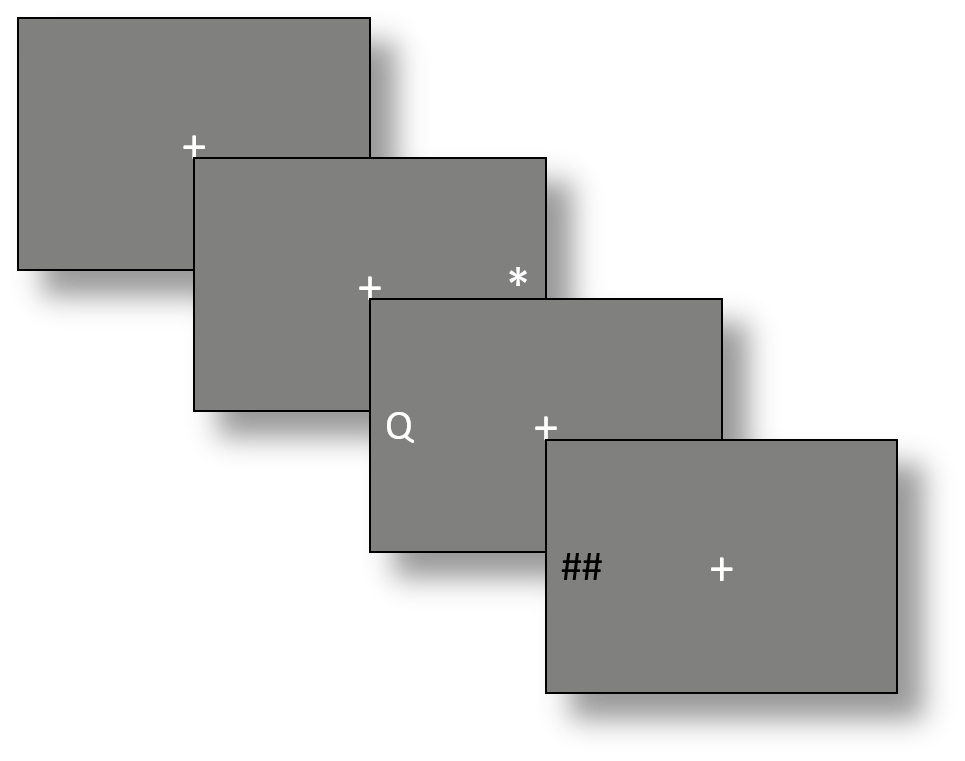
The Antisaccade Task
Try it out! Click here for a web-based demo of the antisaccade task.
(Note: Use Chrome or Safari as your web browser)
The antisaccade task is a classic paradigm used to measure attention control, the domain-general ability to regulate information processing in service of goal-directed behavior (Burgoyne & Engle, 2020). Attention control allows us to pursue our goals despite distractions and temptations, to deviate from the habitual, and to keep information in mind amid a maelstrom of divergent thought (Engle, 2018).
In the antisaccade task, performers must inhibit a reflexive response—do not look at the bold, flickering asterisk—and instead look in the opposite direction. It is a simple task, but it is devilishly difficult. Millions of years of evolution have primed us to look toward things that move, because things that move can eat us, or we can eat them (Engle, 2010). Although the antisaccade task does not require keeping track of lots of information, performance on the task and other simple but difficult attention control tests predicts working memory capacity and, furthermore, explains the relationship between working memory capacity and fluid intelligence. That is, after attention control is accounted for, the once-strong relationship between working memory capacity and fluid intelligence all but disappears (Draheim, Tsukahara, Martin, Mashburn, & Engle, 2020).
These excerpts have been taken from a Current Directions article by Alexander P. Burgoyne and Randall W. Engle:
"Attention Control: A Cornerstone of Higher-Order Cognition."
If you would like to use the antisaccade task in your research,
visit our task downloads page.